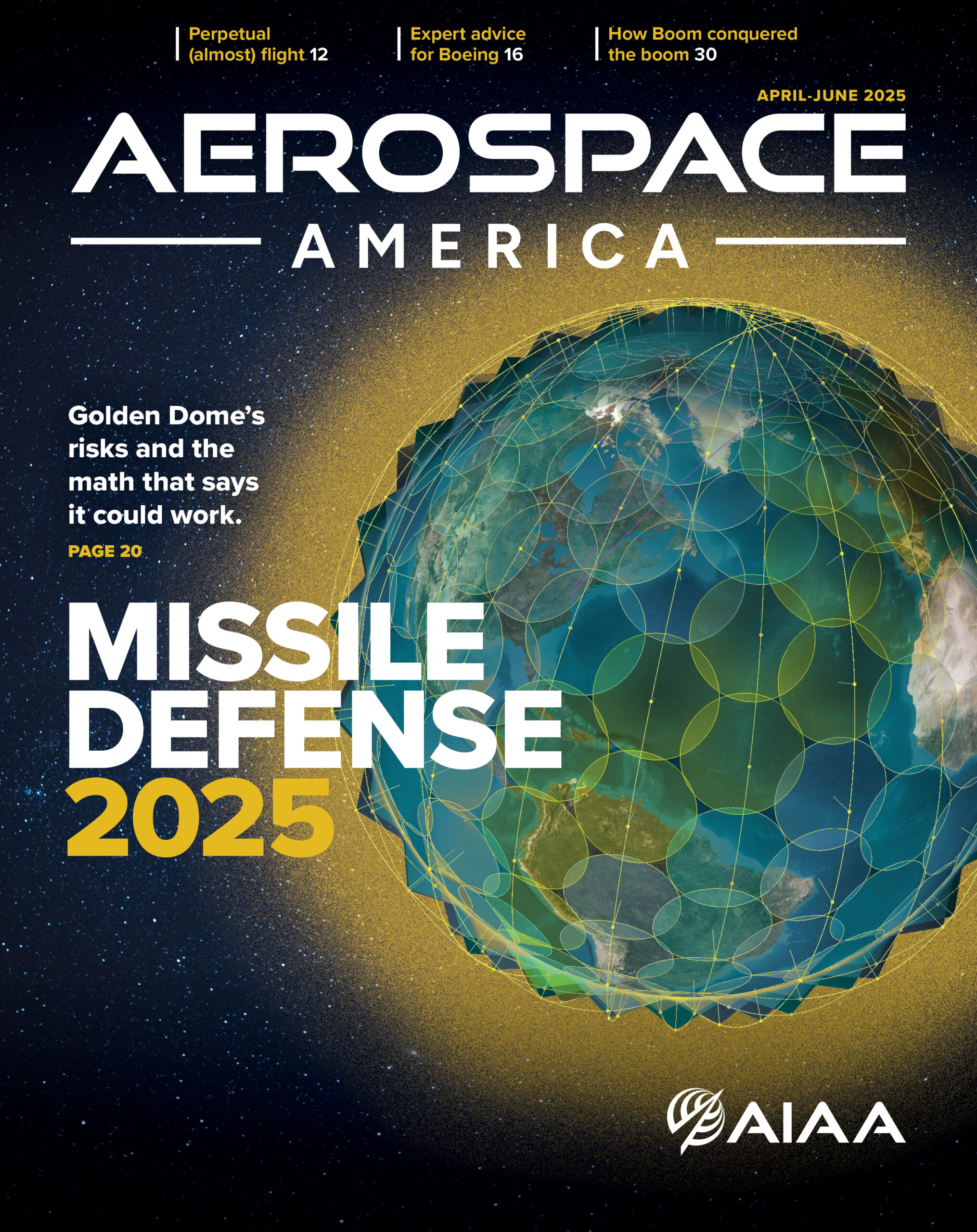Stay Up to Date
Submit your email address to receive the latest industry and Aerospace America news.
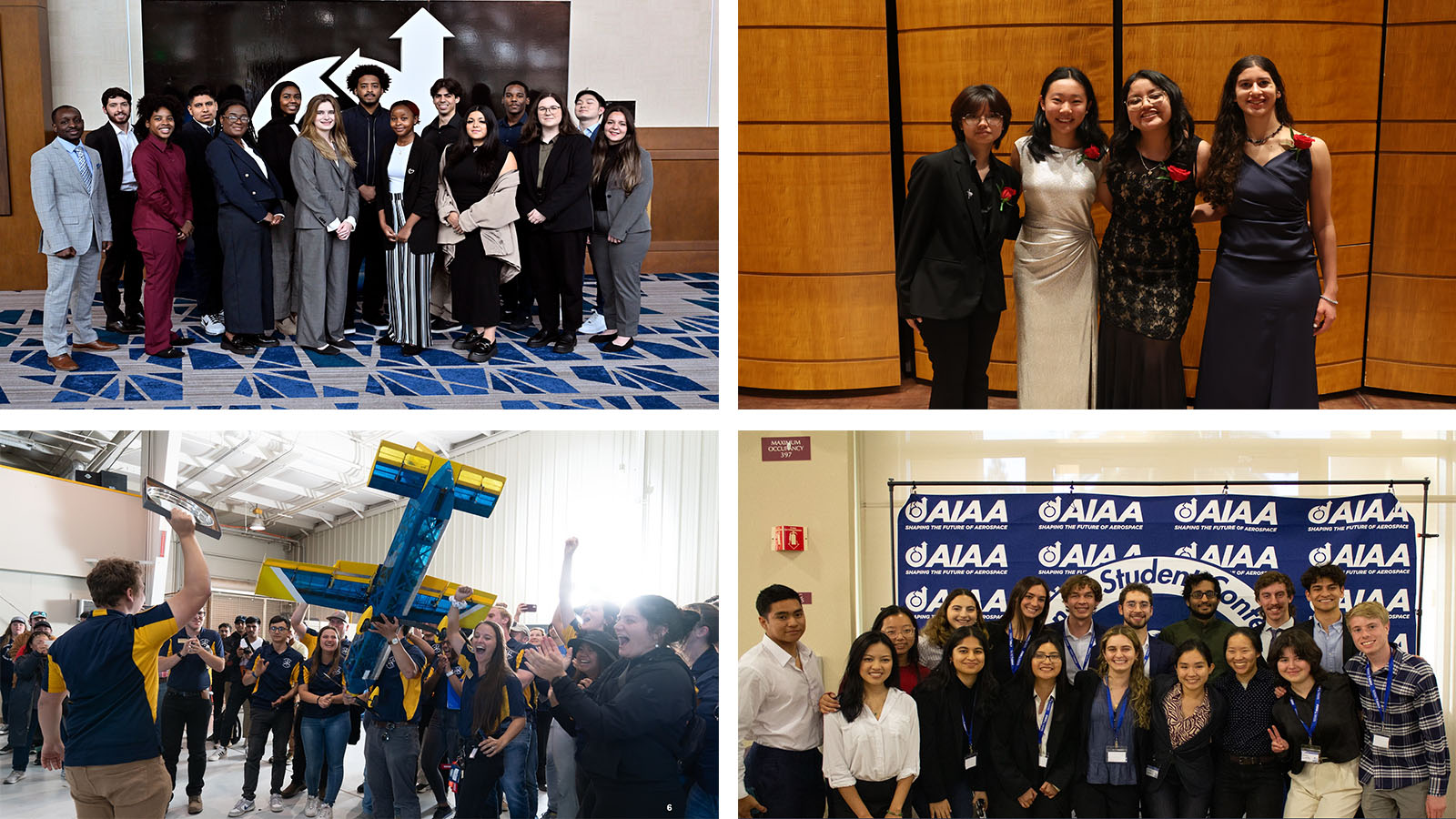
Making an Impact: A Year of Impact: Celebrating Growth and Looking Ahead
Reflecting on the past year, AIAA is excited to see the profound impact of the AIAA Foundation’s initiatives. Students are eager to engage with AIAA and recognize the value of our programs—an enthusiasm that is reflected in the tremendous growth across several of our key initiatives. Notably, both the Regional Student Conferences and Design/Build/Fly events have set new participation records in 2024. The Foundation awarded a record-breaking $161,500 in scholarships and graduate awards, marking the highest amount we’ve ever distributed.
This year, we also welcomed nearly 1,000 new high school members, prompting the creation of a dedicated high school subcommittee to expand the value and benefits we offer to this growing demographic. In addition, we proudly launched a newly updated Careers in Aerospace handbook, now including a section dedicated to alternative career paths such as apprenticeships and skills-based training—helping students navigate a broader range of opportunities in aerospace.
Our progress would not be possible without the unwavering support of our donors and volunteers. As we look ahead to 2025 and beyond, we are excited to build on this success and continue to impact even more students. The AIAA Foundation Board has set an ambitious goal to reach 1 million students, and we are confident that we will achieve this milestone in the coming year.
Key program enhancements for 2025 include:
• Student Conferences: Expanding eligibility to allow early Ph.D. candidates who are still completing coursework to participate.
• Design/Build/Fly: Extending the flyoff event hours, providing more time for flying!
• Scholarships and Graduate Awards: Introducing the new $10,000 Mary A. Jackson Scholarship and increasing the Neil Armstrong and Orville & Wilbur Wright graduate awards to $10,000 each.
• Exploration Generation: In partnership with the National Science Teaching Association and Estes Education, we are launching the final set of free lesson plans for K-12 educators. This four-year collaboration has already reached over 500,000 students, empowering educators with high-quality lesson plans for elementary, middle, and high school classrooms.
Together, these enhancements will help us continue to inspire and support the next generation of aerospace innovators.
Join Us for the AIAA Foundation Day of Giving on 3 December
The AIAA Foundation is proud to participate in the Day of Giving on 3 December to raise funds to inspire and support the next generation of aerospace professionals, from the classroom to their careers. If you’ve missed the official Day of Giving, we would still encourage you to donate to the AIAA Foundation and help us shape the future of aerospace through our innovative K-12 and university programs—including STEM classroom grants, scholarships, conferences, and hands-on competitions. With your partnership and generosity, we can provide meaningful, long-lasting opportunities that will help students and emerging professionals reach their full potential in the aerospace field.
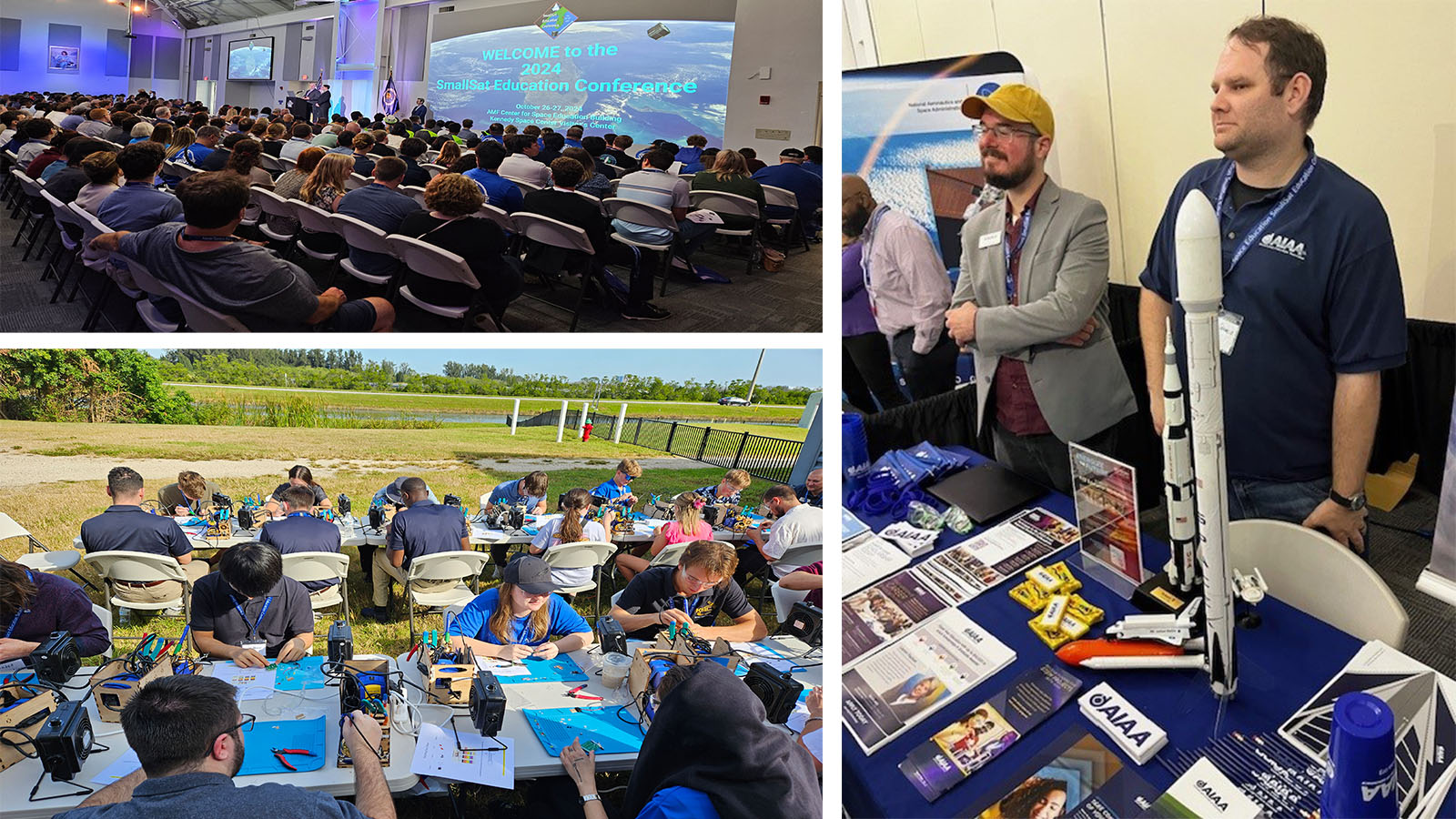
3rd SmallSat Education Conference Continues to Grow and Inspire
The 3rd annual SmallSat Education Conference, held 26–27 October at the Astronaut Memorial Foundation’s Center for Space Education building at the Kennedy Space Center-Visitor Complex, saw substantial growth this year with 543 registrants from 8 countries. Attendees included educators and students from middle school through postgraduate, all united in their interest and passion for CubeSats, ThinSats, and high-altitude balloons.
The event, whose organizers include the AIAA Cape Canaveral and Palm Beach Sections, featured 36 presentations and 6 workshops. Attendees had the chance to be part of a hands-on soldering opportunity and a workshop focused on preparing students to get their amateur radio license. The keynote speaker, Kenneth Reightler, an astronaut and U.S. Naval Academy professor, shared his experiences piloting multiple shuttle missions, and encouraged the students to get involved with AIAA early in their academic careers. In 2022, organizers donated 16 CubeSat emulators to educators in Peru and this year a contingent of those teachers and students attended the conference to give an update on their success and share their work.
Next year’s conference will be held 25–26 October 2025, with a keynote from Norman Fitz-Coy (University of Florida). For more information, visit www.smallsateducation.org.
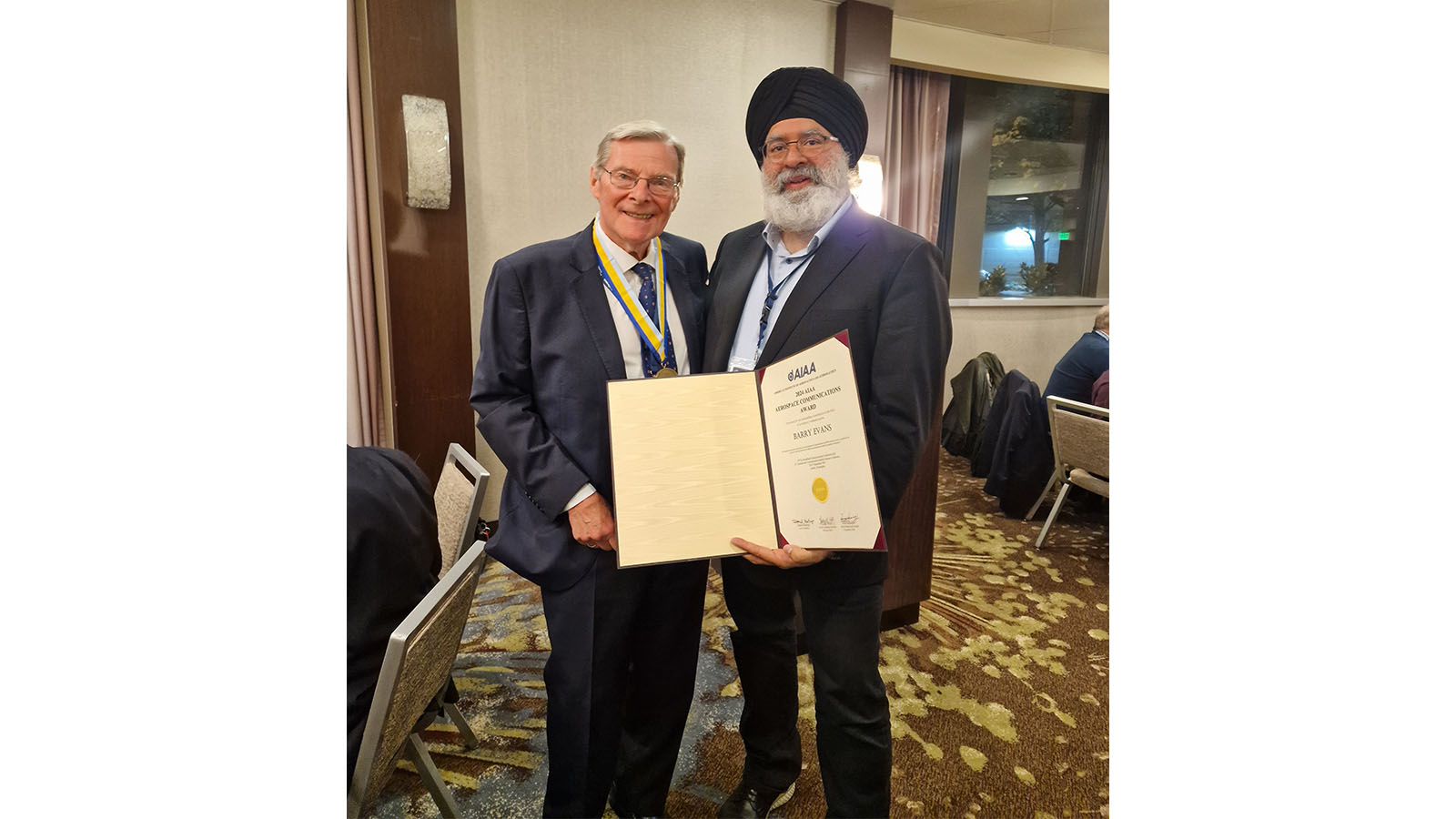
2024 AIAA Aerospace Communications Award Presented in September
Professor Barry G. Evans was recognized with the AIAA Aerospace Communications Award at the 29th Ka and Broadband Space Communications Conference (KaBSC) and the 41st International Communications Satellite Systems Conference (ICSSC) and Colloquium, held 24–27 September in Seattle, WA.
Evans, Professor of Satellite Communications and Head of Satellite Research at the University of Surrey, received the award for inspirational technical leadership in the development of communications satellite concepts, systems, regulations and protocols, and the promotion of satellite communications within the academic community. He has long been recognized as a leading authority on all aspects of advanced satellite communications, and Evans is known as one of the founders of the Satellite Communications faculty at the University of Surrey and was the Founding Director of Surrey Satellite Technology Ltd. His work continues to be highly relevant to the progress of space communications, and much of the current low Earth orbit (LEO) end-to-end networking and spectrum innovations can be linked to work done by Evans.
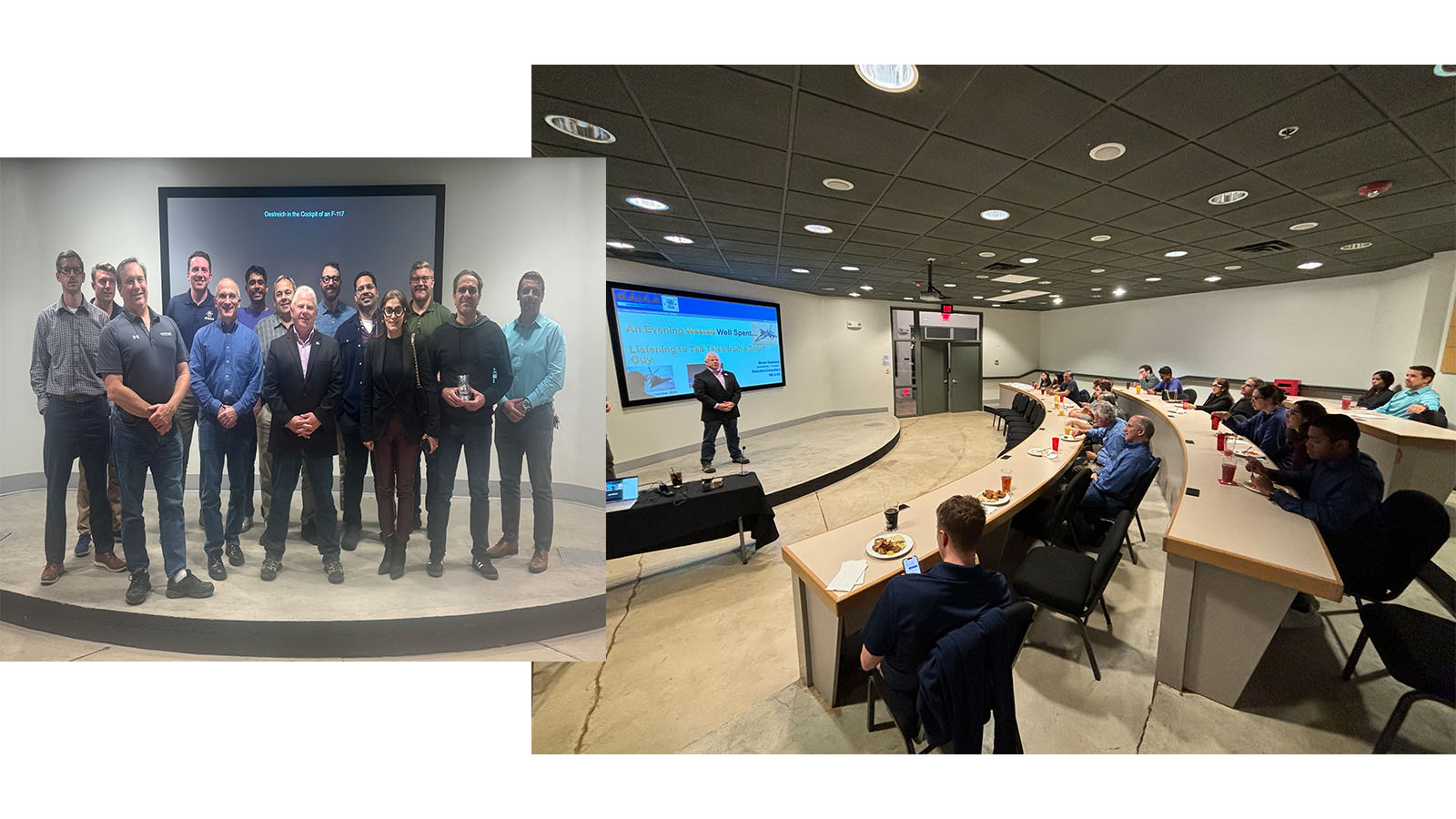
AIAA Greater Philadelphia Section Hosted November Lecture
The AIAA Greater Philadelphia Section presented a lecture by Bruce Oestreich, former Boeing executive and fighter pilot, on 7 November. The talk, billed as “An Evening Well Spent Listening to Tall Tales from a Short Guy,” focused on flying the F-16 and F-117 back in the “old days.” Oestreich also discussed what it was like supporting and leading development of the V-22 Osprey program. The audience had a chance to ask questions, and the event was followed by a happy hour.

AIAA Phoenix Section Members Attended STEM & Innovation Summit
The AIAA Phoenix Section was represented at the STEM & Innovation Summit at the Arizona Science Center on 22 October. The event, sponsored by the SciTech Institute, featured dozens of exhibits on sharing, networking, and spreading STEM awareness in Arizona. The AIAA information table included Earth, Mars, and moon “gravity jugs” and an air-pumped rocket, plus AIAA handouts on careers in aerospace. The swag giveaways (flying discs, balsa airplanes, and sunglasses) also were popular. AIAA members Michael Mackowski and Scott Fouse spoke with many teachers and students about how AIAA can help them plan their career in aerospace. We were able to network with several STEM nonprofit groups as well. Total attendance for the day was around 500 (mostly educators and high school students).
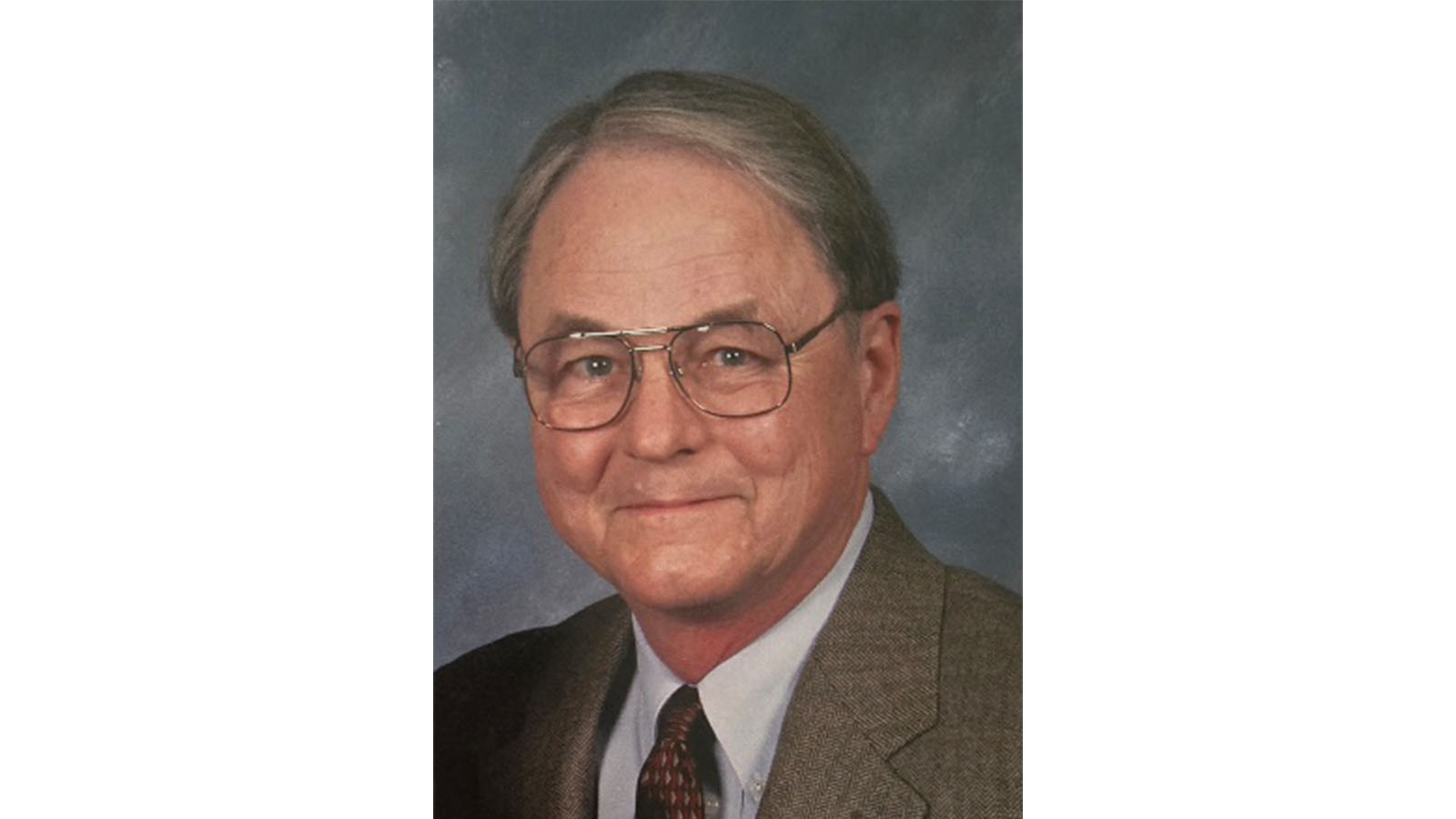
AIAA Fellow Craig Died in July 2024
Roy R. Craig Jr., professor emeritus of Aerospace Engineering at the University of Texas at Austin who is known for developing the Craig-Bampton Method of component mode synthesis, died on 9 July 2024. He was 90 years old.
Craig received a Civil Engineering undergraduate degree from OU and studied at the University of Birmingham in England on a Fulbright Fellowship. He then earned M.S. and Ph.D. degrees in Theoretical and Applied Mechanics from the University of Illinois at Urbana-Champaign before accepting a position teaching Aerospace Engineering and Engineering Mechanics at the University of Texas at Austin.
For 40 years Craig taught at UT Austin, where he developed 13 different undergraduate courses and 8 different graduate courses and supervised 12 Ph.D. dissertations and 16 M.S. theses. Among his students are an astronaut and numerous leaders in industry and academia. Craig also set up the first computer facilities for his department, made over 80 presentations at technical meetings, published 42 technical reports, and two textbooks.
Craig was the developer of the Craig-Bampton Method, used extensively worldwide to make reduced-order models for analyzing the dynamic response of complex structures. He also pioneered the use of Krylov/Lanczos methods for model reduction and control of flexible structures and contributed to the development of frequency-domain system identification methods. He worked at Boeing in Seattle for two summers and had additional industrial experience with the U.S. Naval Civil Engineering Laboratory, Lockheed Palo Alto Research Laboratory, Exxon Production Research Corp., NASA Johnson Space Center, and IBM.
Craig was an AIAA Fellow as well as a member of numerous associations, including SEM, ASEE, and ASME. He was honored with numerous awards during his career, including the 1996 ASEE/AIAA John Leland Atwood Award, for outstanding contributions in structural dynamics and experimental methods. He also received two citations for his contributions to aerospace structures technology, including a NASA citation for contributions to the U.S. manned spaceflight program. His final project in retirement was publishing an online version of his textbook, Mechanics of Materials, and it will continue to reach future engineers and prepare them to help in the world.
Stay Up to Date
Submit your email address to receive the latest industry and Aerospace America news.
